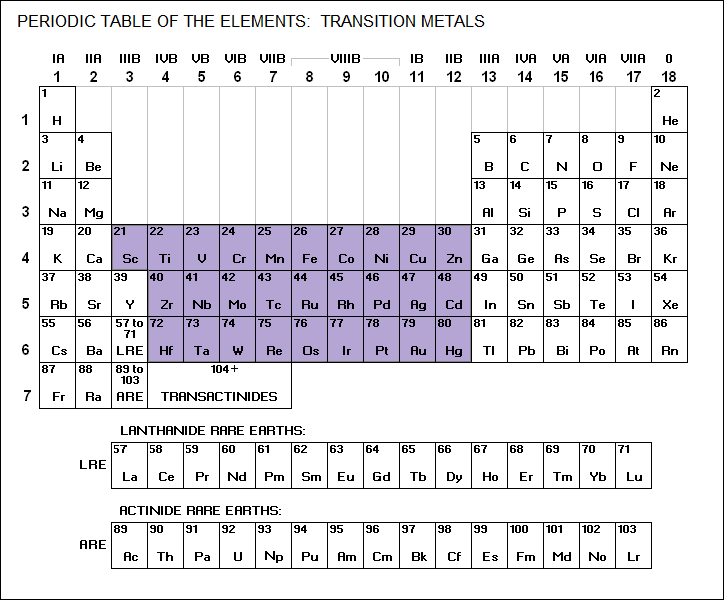
* Copper is a member of the transition metals family:

____________________________________________________________________
COPPER / Cu / 29
An orange-gold, malleable, and ductile metal, with good resistance
to corrosion. When oxidized, it turns greenish. It is the
second best electrical conductor next to silver. Its symbol Cu
is from the Latin "Cuprium aes", meaning "Cyprus metal", since the
island of Cyprus was a major source of copper in antiquity. Two
isotopes, both stable, are found in nature: Cu<69/29> at 69%, and
Cu<65/29>, at 31%.
atomic weight: 63.546
abundance: 26th
density: 8.96 gm/cc
melting point: 1,083 C
boiling point: 2,567 C
valence: 1 <2>
____________________________________________________________________
The "Cu+" ion was once referred to as the "cuprous", while the "Cu++" ion was referred to as the "cupric" ion. They are now known as "copper(I)" and "copper(II)" respectively.
Copper is a required dietary metal, though it is so common in the environment that almost nobody suffers from a copper deficiency. Copper is produced in millions of tonnes per year, mostly from chalcopyrite and bornite, which are mixed sulfides of copper and iron. It is heavily used in metal parts for various kinds of machines and in construction, both in its pure form and in alloys such as brass (copper and zinc), bronze (copper and tin), and corrosion-resistant cupronickel (of course, copper and nickel). It is also heavily used in electrical wiring and components.
Interestingly, some animals, including the octopus and spiders, have blue blood. This is because they use a blue copper-based compound to carry oxygen through the bloodstream, while other animals (such as ourselves) use a red iron-based compound, hemoglobin.
